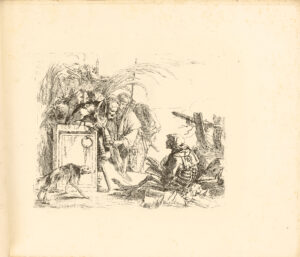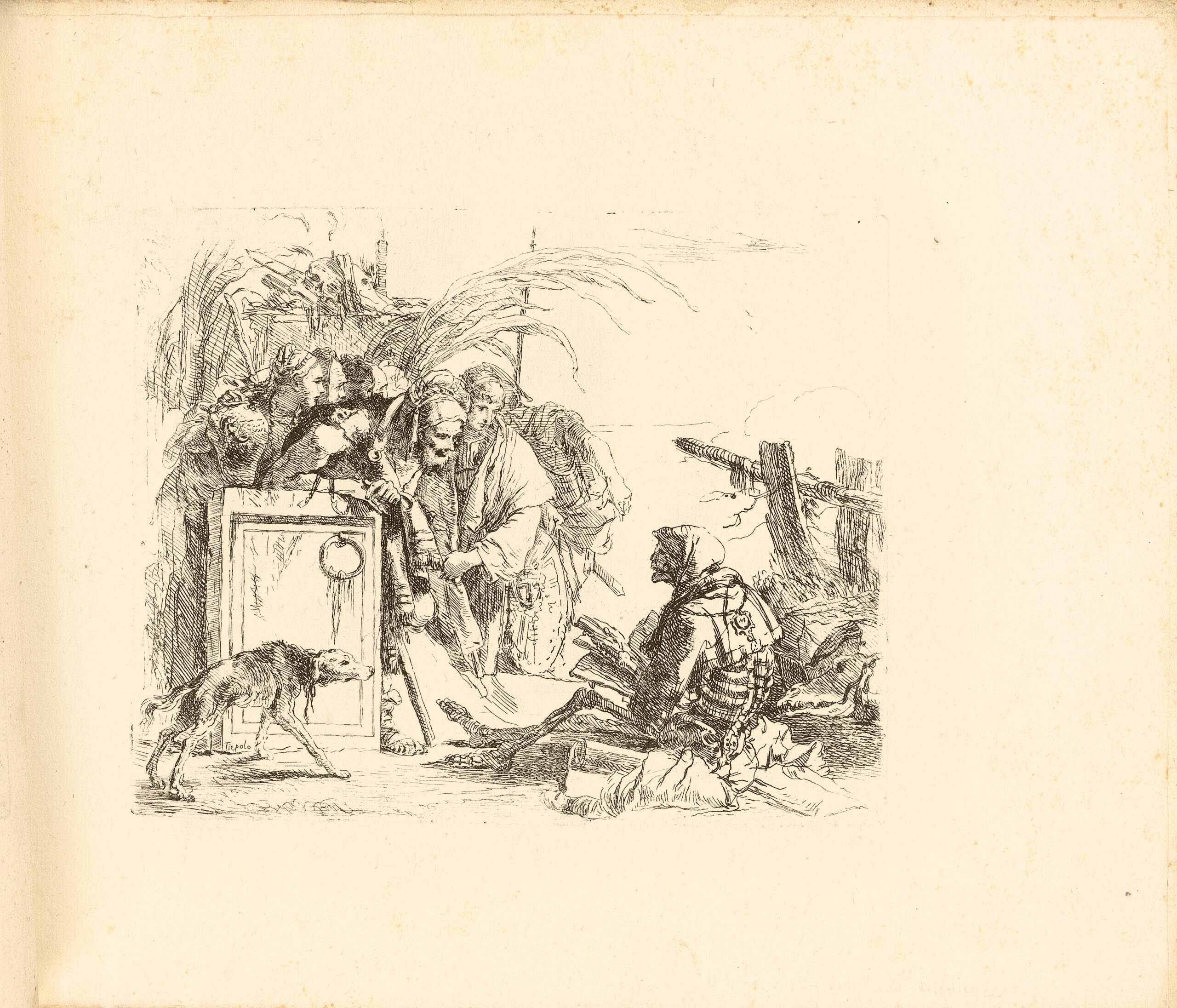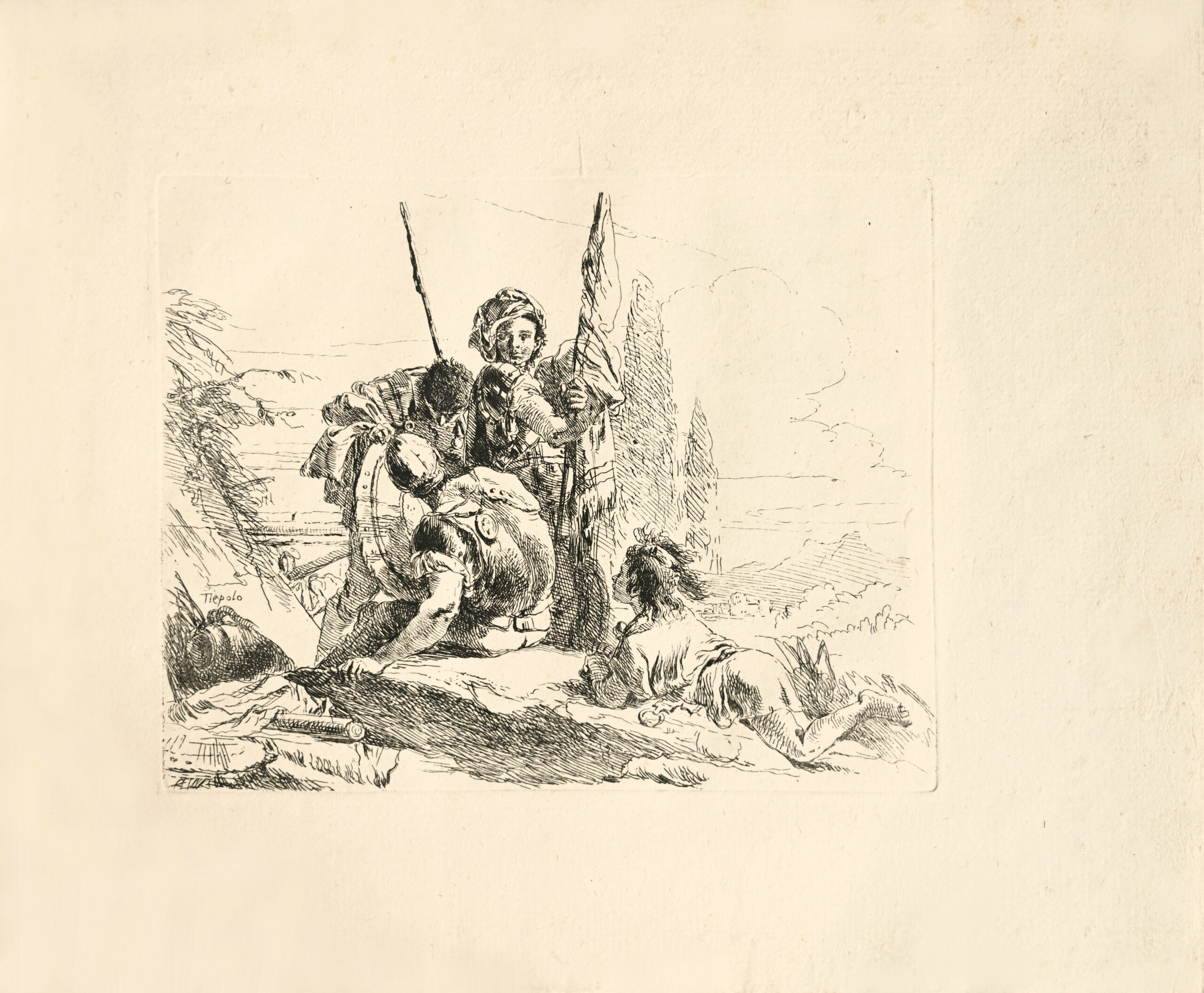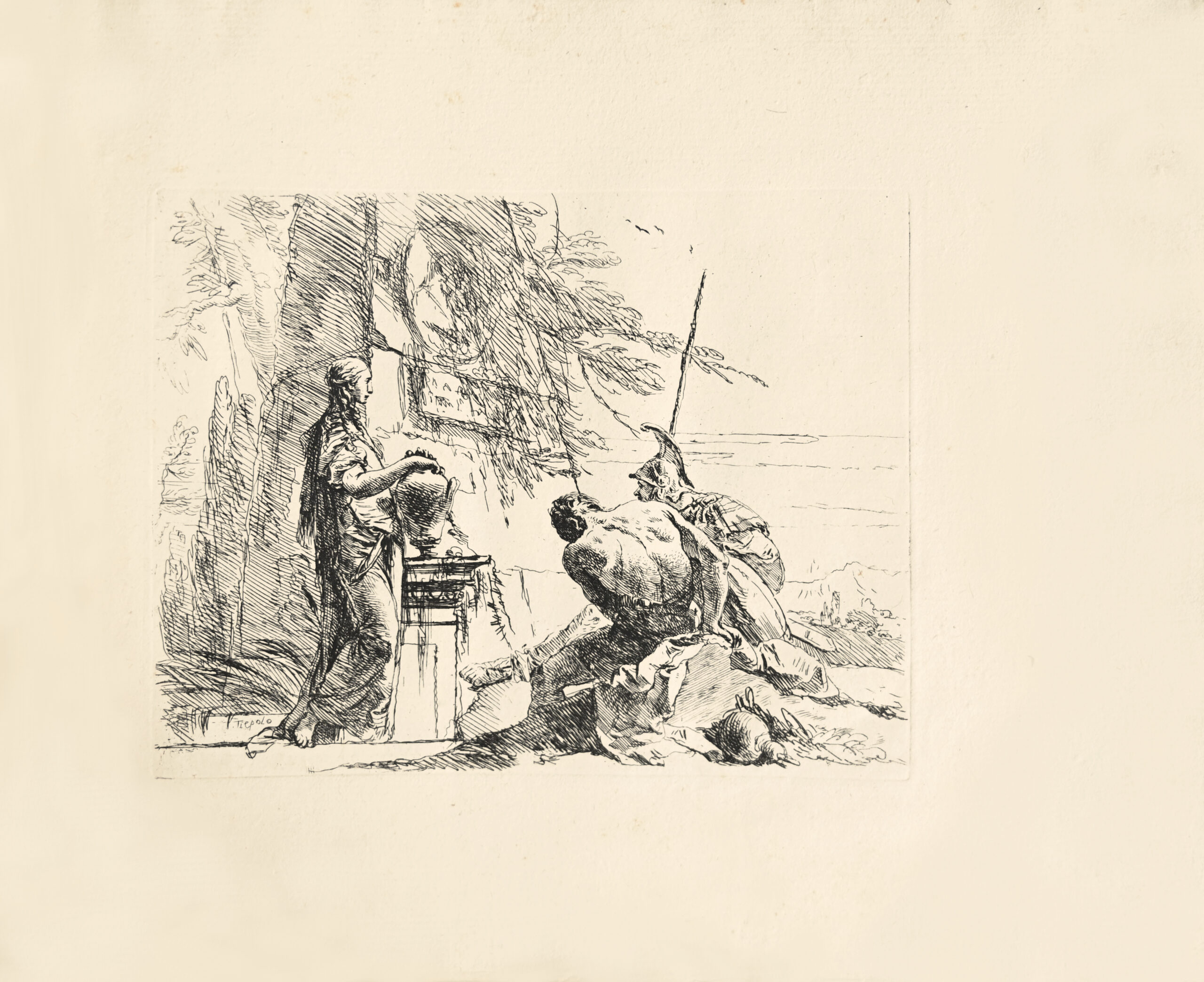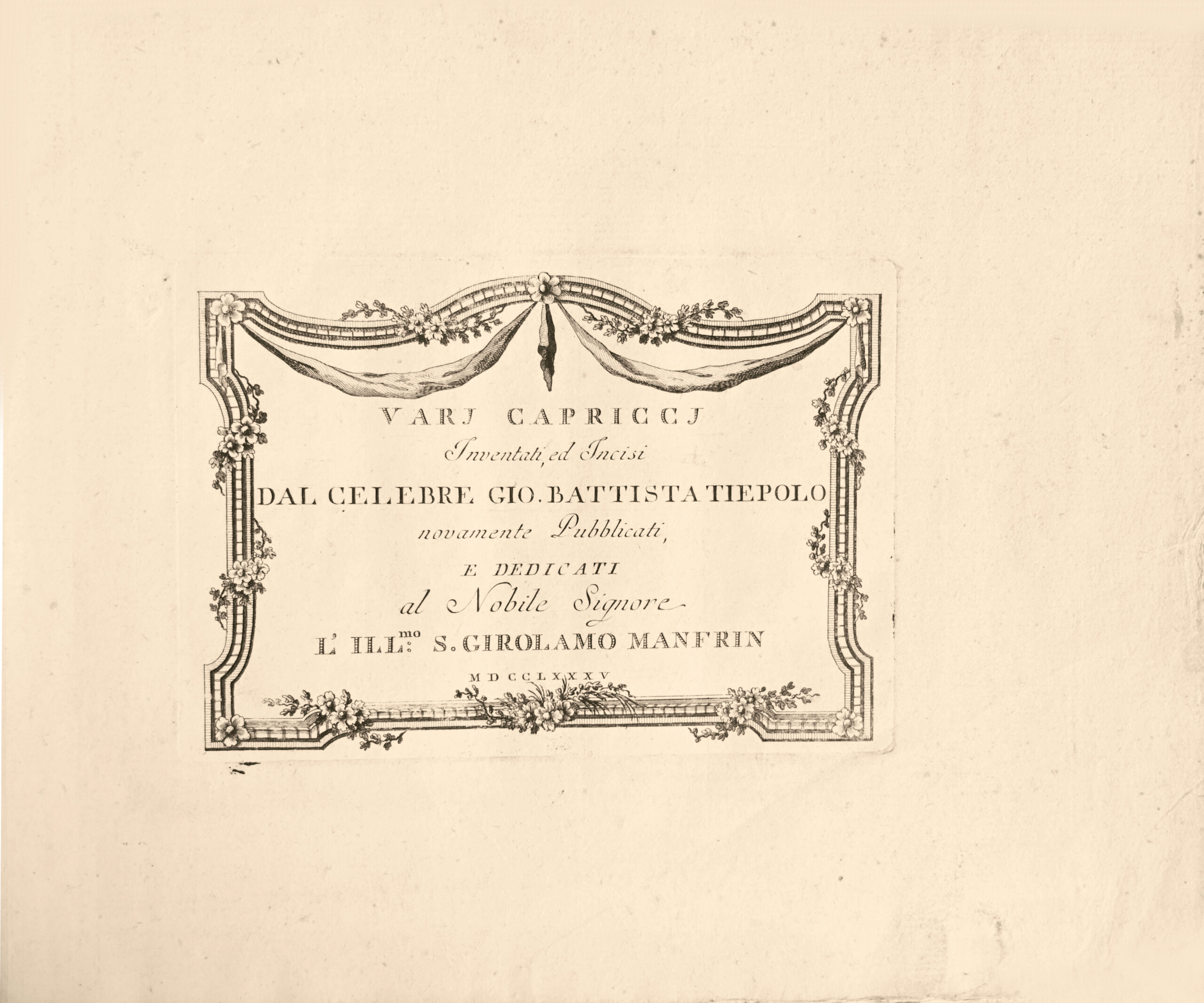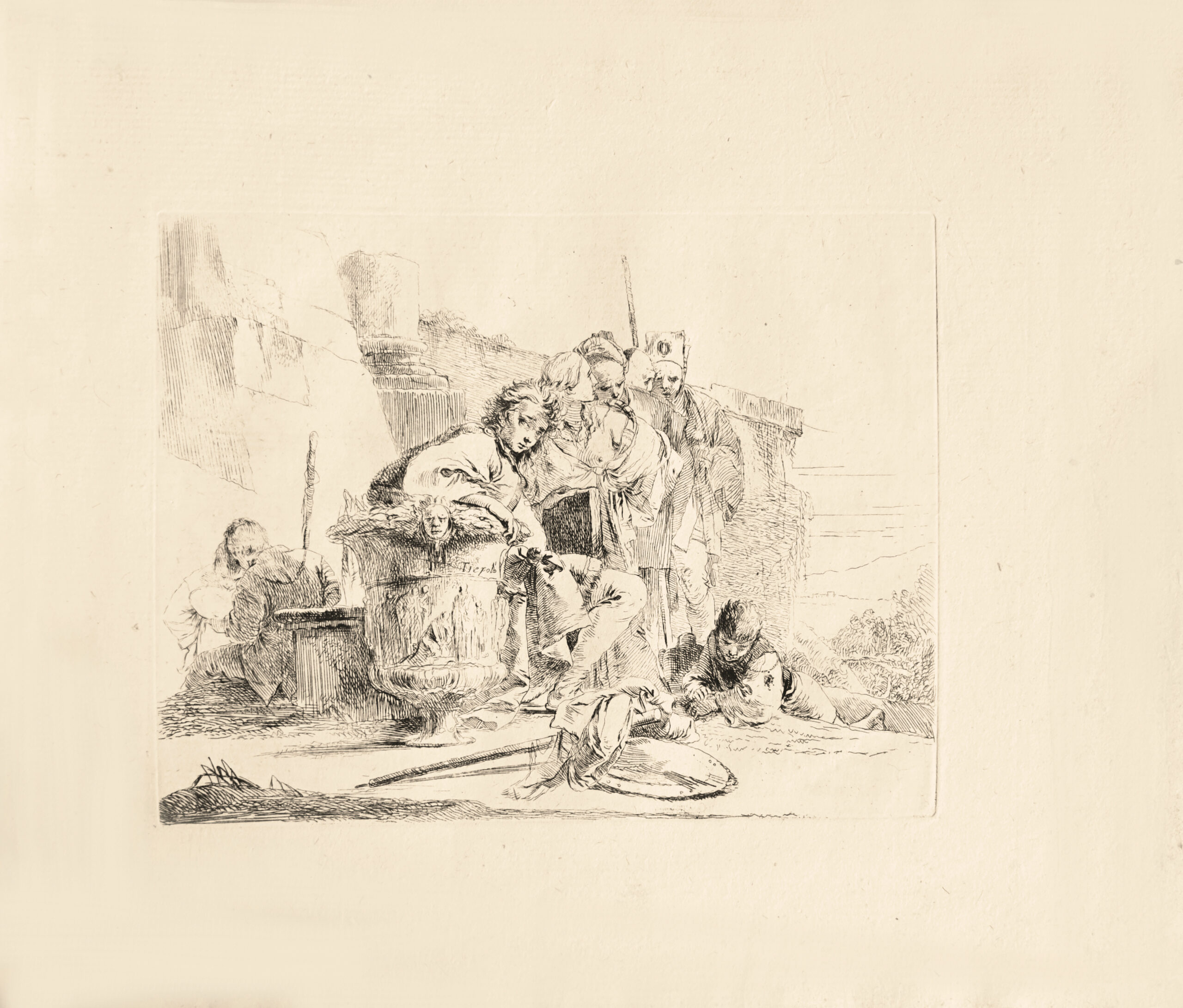[Venise], 1785.
Oblong 4to [310 x 233 mm], engraved throughout, title and 10 fine etched plates by and after Tiepolo, some slight foxing and soiling, mostly marginal, plate 7 with light stain within image. Etchings on laid paper. Sewn as issued in original marbled wrappers, untrimmed, preserved in modern cloth chemise and slip-case.
This third edition was published 15 years after Tiepolo’s death. All editions are rare.
De Vesme 382.
De Vesme, 3/10. Rizzi (1970), 28/37. Rizzi (1971), 29/38. Succi, 41/50.
Pubblicati per la prima volta da Anton Maria Zanetti nella seconda edizione della “Raccolta di chiaroscuri”, I “Capricci” conobbero formalmente una sola edizione autonoma contenete le tavole in stato unico ed il forntespizio dedicato a Manfrin senza variazione della data “1785”.
Ancora fonte di dibattito la datazione della serie che, secondo Rutgers (*), dovrebbe attestarsi fra il 1733 ed il 1735. (*) J. Rutgers, The dating of Tiepolo’s Capricci and Scherzi, in: “Print Quarterly” Vol. XXIII n.3, settembre 2006, pp. 254/263.
Giovanni Battista Tiepolo was one of the most celebrated painters of eighteenth-century Italy.
He began making prints in the 1730s, and his first series of ten etchings, known as the Vari Capricci, represents a personal response to the prints and drawings of Salvator Rosa and Giovanni Benedetto Castiglione, which he had been able to study in the collections of Anton Maria Zanetti the Elder and Zaccaria Sagredo. These prints do not present clear or explicit meanings, but generally show groups of figures at rest or in contemplation: soldiers and young boys in pastoral landscapes, a horse and its rider accompanied by a groom, women and children with goats and other animals. Several prints evoke the ancient or Arcadian world, with figures placed near tombstones, classical urns, and fragments of obelisks; in one of them, the figure of Death reads from an open book before a group of the living.
From 1742 onwards, Zanetti began to include the Vari Capricci in his own collection of wood engravings, the Raccolta di Varie Stampe, writing in 1751 to the Prince of Liechtenstein that he had added prints by Tiepolo, “of the liveliest and most piquant taste, worthy of the highest esteem.” These prints were followed by a second series of twenty-three etchings, the Scherzi di fantasia, which were not widely circulated until after Tiepolo’s death. Tiepolo’s prints were praised by collectors and connoisseurs, their enigmatic meanings being seen as a mark of his genius and a successful interpretation of the term capriccio. In 1774, Pierre-Jean Mariette wrote of Tiepolo’s “rich and fertile genius… which shines especially in his prints.” The dating of Tiepolo’s two engraved series, the Vari Capricci and the Scherzi di fantasia, has been the subject of long debate, notably in a recent study by Jaco Rutgers (Print Quarterly, XXIII, 3, 2006, pp. 254–63).
Tiepolo’s first masterpieces in Venice were a cycle of huge painted canvases of ancient battles and triumphs to decorate a large reception hall in the Dolfin Manin Palace in Venice (c. 1726-1729).
He became a sought-after and prolific painter: he painted canvases for the churches of Verolanuova (1735-40), a ceiling for the Jesuits (church of Santa Maria del Rosario o dei Gesuati) in Venice (1737-39), for the Scuola dei Carmini (1740-47) and the Scalzi (1743-1744), a ceiling for the Archinto and Casati-Dugnani palaces in Milan (1731), the Colleoni chapel in Bergamo (1732-1733), in Palazzo Clerici in Milan (1740), the decorations for the Cordellini villa in Montecchio Maggiore (1743-1744) and for the ballroom in Palazzo Labia, showing the story of Cleopatra (1745-1750).
Around 1740 he collaborated in the engraving of the series of prints by Giuliano Giampiccoli of landscape views after Marco Ricci (36 landscapes with two frontispieces) published around 1740 and reissued with additions in 1775 by Teodoro Viero (48 landscapes and 4 frontispieces). The complete set of 36 landscapes is kept in the British Museum.
Tiepolo is famous locally but also abroad as in Russia or in England. In 1761 King Charles III of Spain commissioned him to paint the ceiling of the Apotheosis of Spain for the royal palace in Madrid. At the beginning of 1762, he left for Madrid which provoked the jealousy and opposition of Raphael Mengs and remained there until his death.
An excellent painter, he influenced Goya through a notable technique that was later highly recognized: light, the “lighting” of specific parts of the painting with light colors to bring out impressions or ideas, such as purity or the divine.
A fine copy with very wide margins as preserved untrimmed, in original condition.
